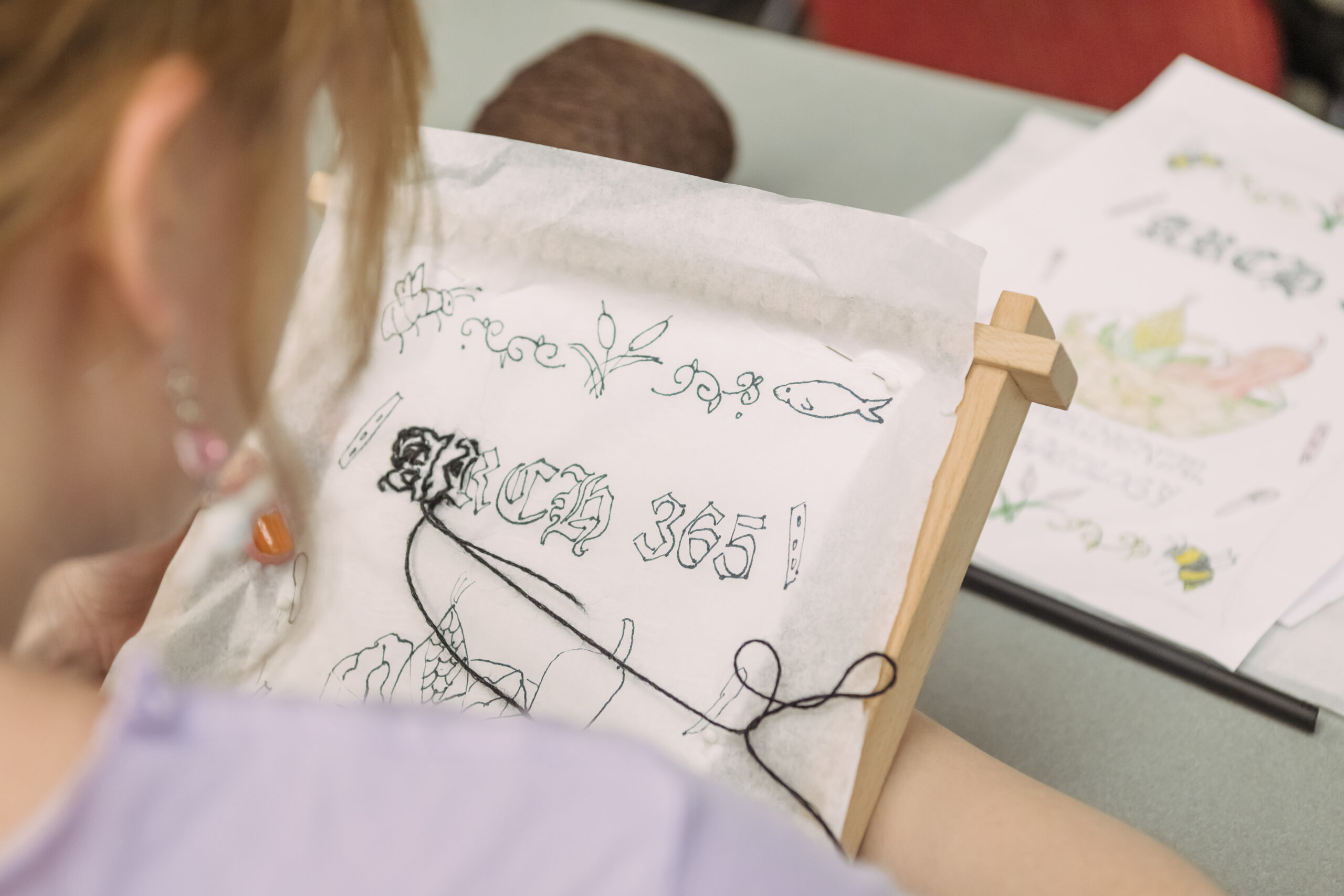Aidan Taylor ’25, history, whittles rush stalks, exposing the spongy pith for use as a candle substitute. Halima Jama ’25, English, works with a mortar and pestle, grinding herbs for a medicinal tincture. Hannah Looman ’26, history, writes with a goose-feather quill and handmade ink, while two faculty instructors troubleshoot at a loom.
It’s just another day in ARCH 365: Experimental Archeology, a new summer course offered by the ancient studies department at UMBC. A mix of handiwork and historical research into craft traditions of the past, the course teaches students about the daily life of premodern individuals from a range of cultures. Each student then investigates their own research question about historic ways of life for a capstone project.
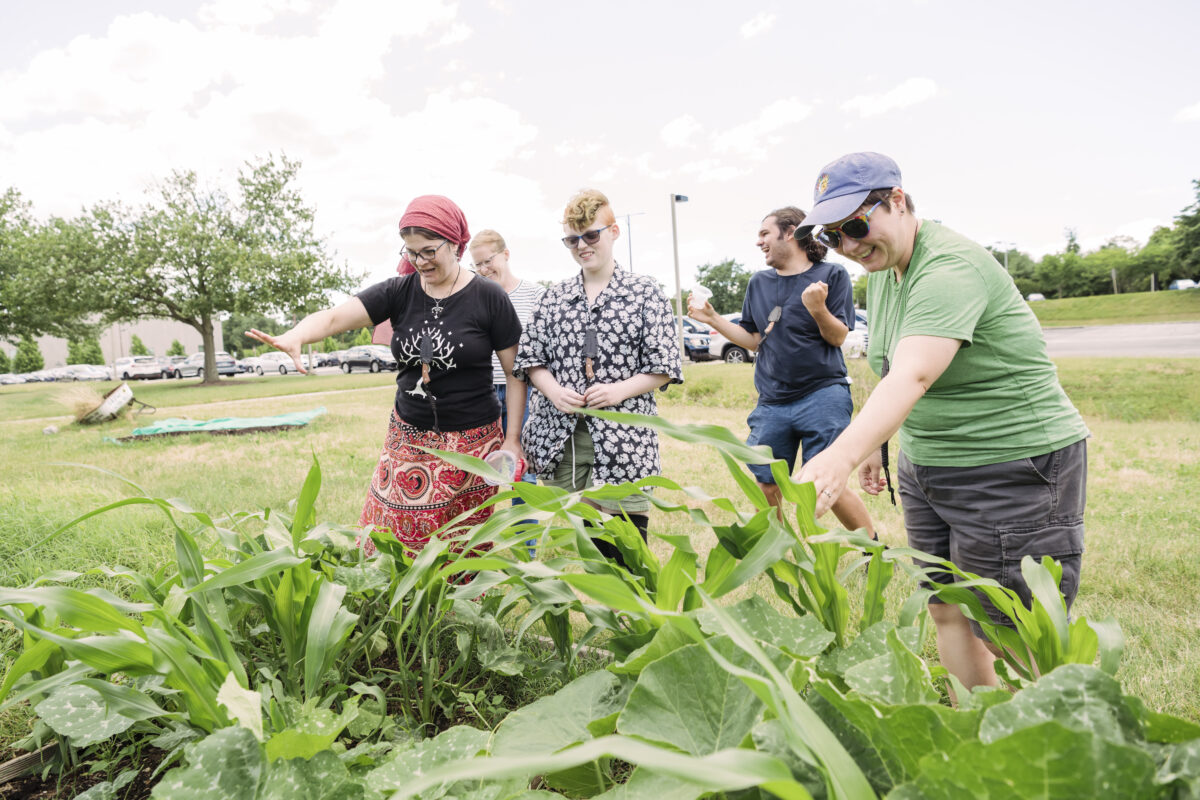
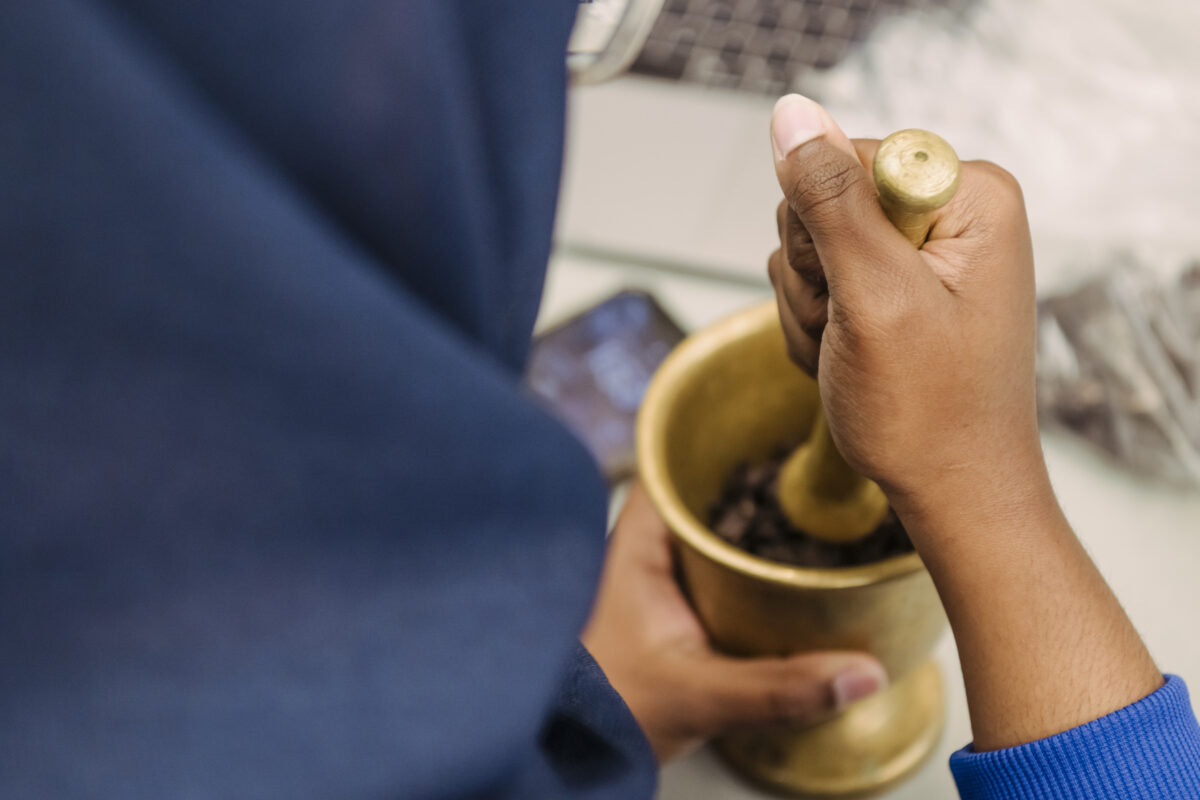
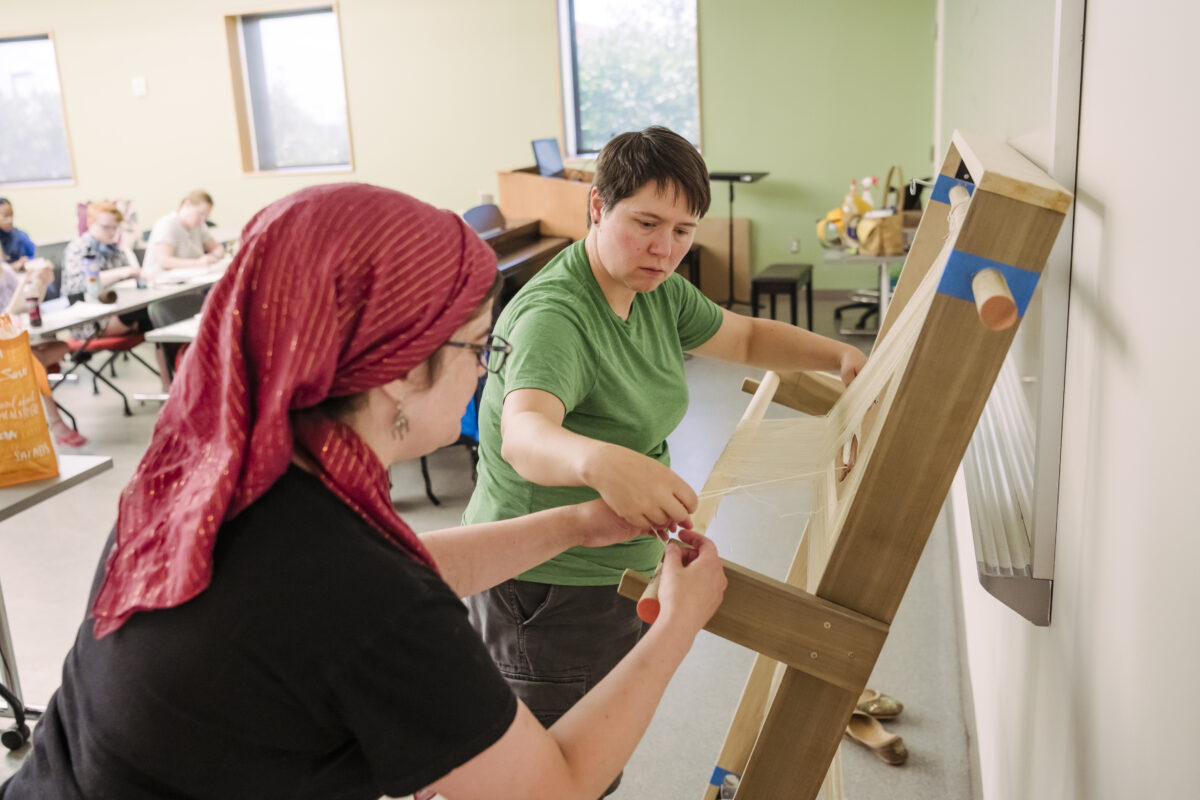
From left: A visit to the UMBC community garden; grinding herbs with a mortar and pestle; troubleshooting at the loom. (Marlayna Demond ’11/UMBC)
“We’re using art and hands-on activities to research the past,” says Molly Jones-Lewis, senior lecturer of ancient studies and an instructor for Experimental Archeology. “It’s a way of bringing working people’s lives back into the curriculum.”
“Putting your body through the motions people did hundreds of years ago” is a valuable educational tool, adds Jones-Lewis’ co-instructor, Lindsay Johnson, senior lecturer of music.
The course exposes students to some of the challenges premodern people faced in everyday life, and the innovative ways they addressed them. “Some things are just mind-blowing,” Looman shares. “The creativity people had to have to think of things to survive is a completely different way of thinking and being in your environment.”
History from the bottom up
The course included experiences foraging on campus, creating musical instruments with found materials, cooking and preserving food, creating natural textiles and dyes, archery, and more. In the final week, the students offered a “community day” near the UMBC Community Garden, where the students demonstrated the skills they’d learned and explained their research projects to a small crowd.
Sarah Itzel, a returning student in ancient studies, shared her recipes for premodern electrolyte drinks, while Jama explained how she adapted an old family herbal recipe for treating mild illnesses. Looman showed off an embroidery project, and visitors got to taste foraged berries fermented with honey from campus bees.
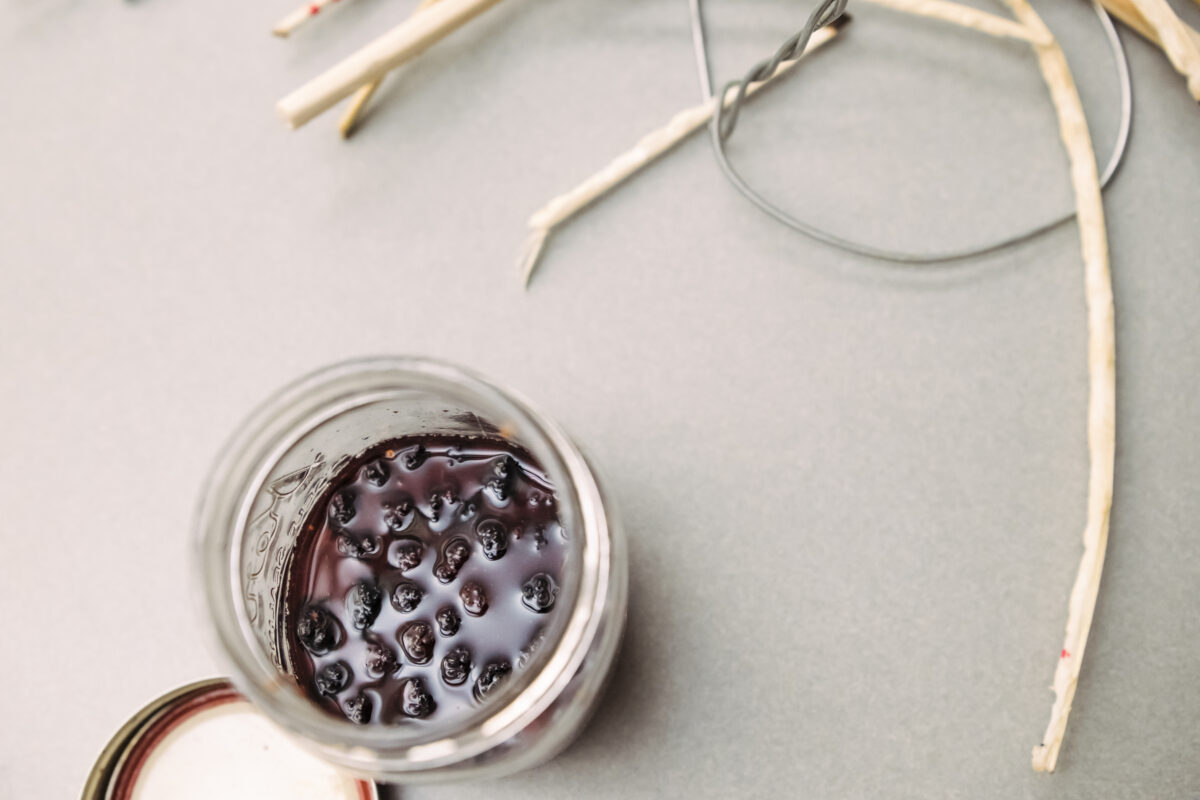
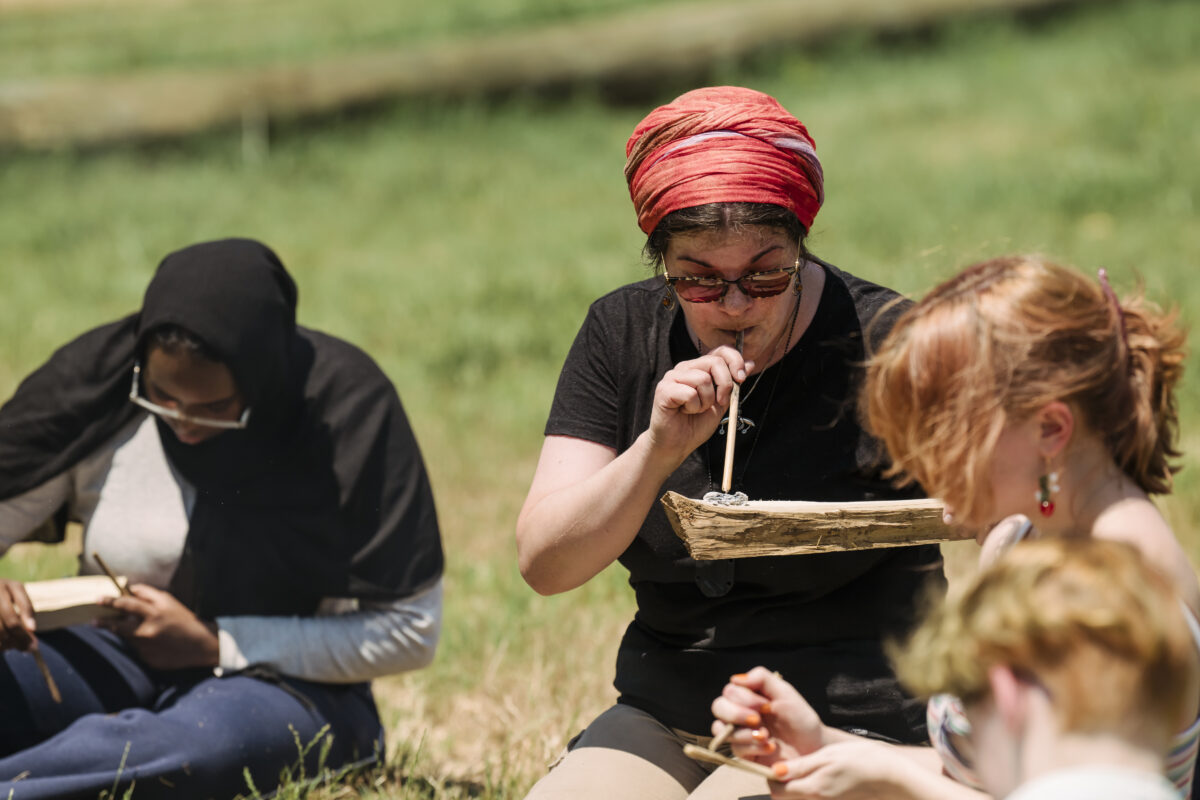
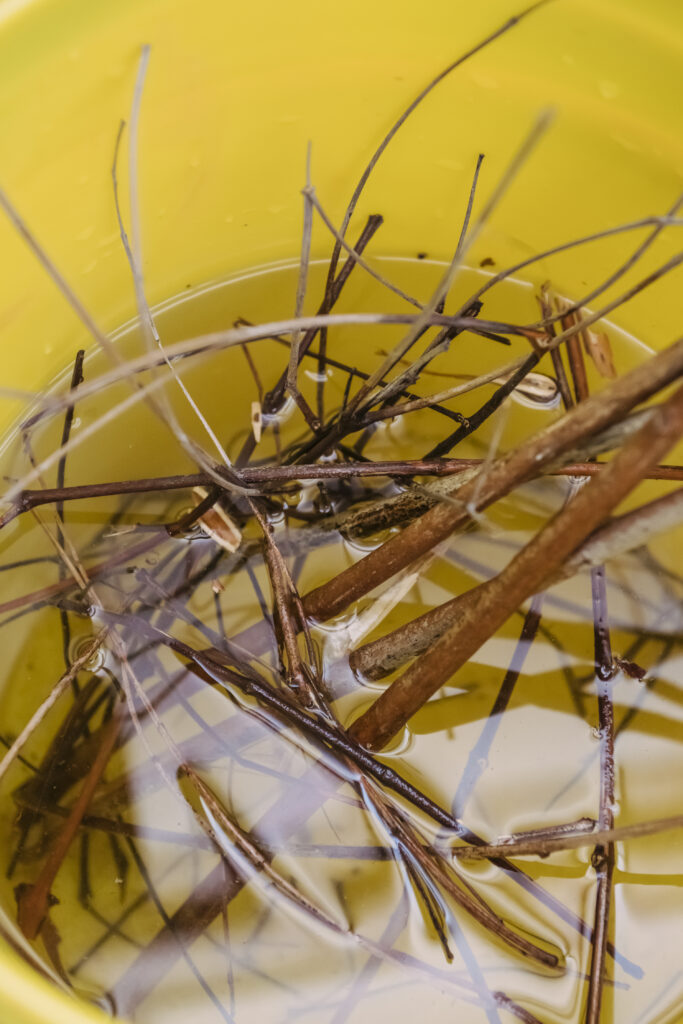
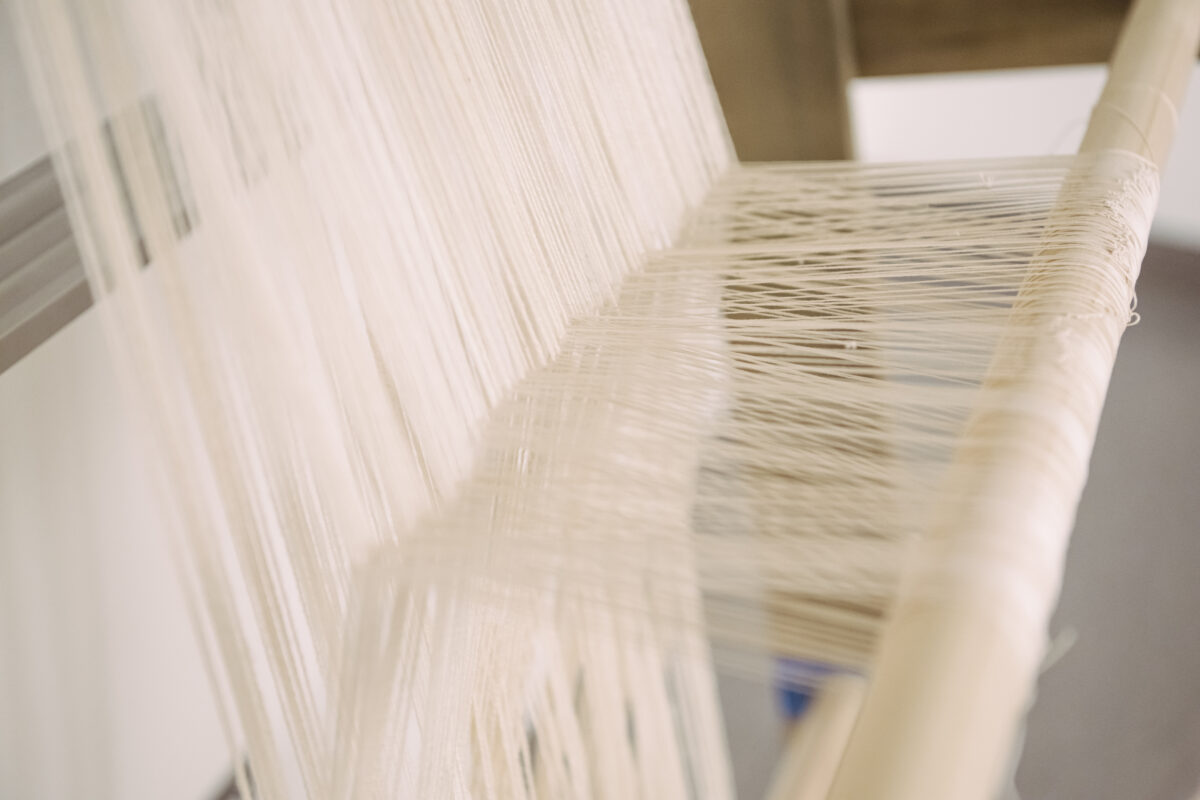
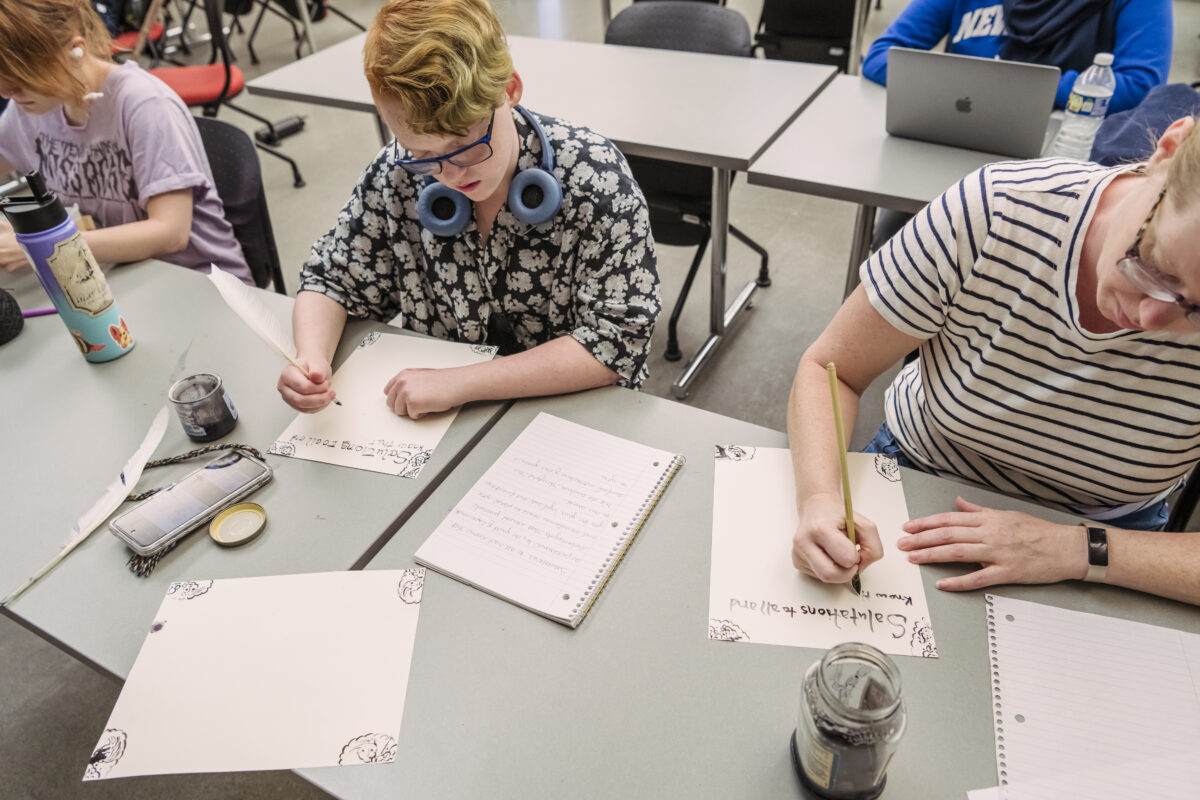
Clockwise from top left: Fermented berries soak in a jar; Molly Jones-Lewis works on creating a depression in a piece of wood that will eventually become a ladle; rushes soak in water before being peeled to reveal the pith within; a close-up on the class’s loom; students work with quill pens. (Marlayna Demond ’11/UMBC)
The course invited students to interact with the campus environment in a new way, including involving UMBC grounds maintenance staff and the Office of Sustainability and Environmental Health and Safety. “We found community resources we didn’t know existed,” Jones-Lewis added. “There is a ton of expertise and knowledge among the staff.”
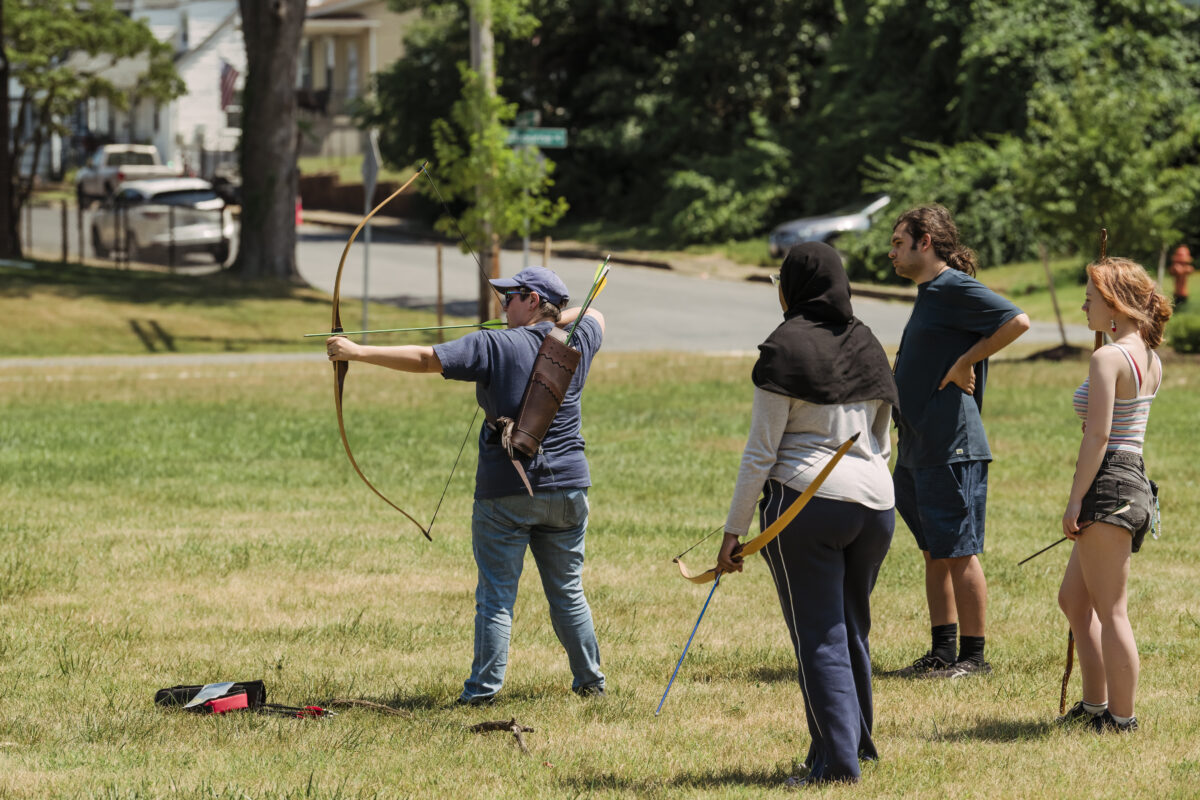
Jones-Lewis and Johnson see the course as part of a “history from the bottom up movement,” where the focus is on the lives and contributions of ordinary people throughout history. Overall, the students came away with what the instructors call “heritage skills” while developing a foundation in research methodology that will serve them as they move through the rest of their coursework and into careers.
Reflecting on the experience of working with one’s hands in the class versus a world mediated through screens, Itzel says, “It’s an old-new way for the brain to work.”
Lindsay Johnson demonstrates how to use a bow. (Marlayna Demond ’11/UMBC)
Tags: Ancient Studies, CAHSS, Music

